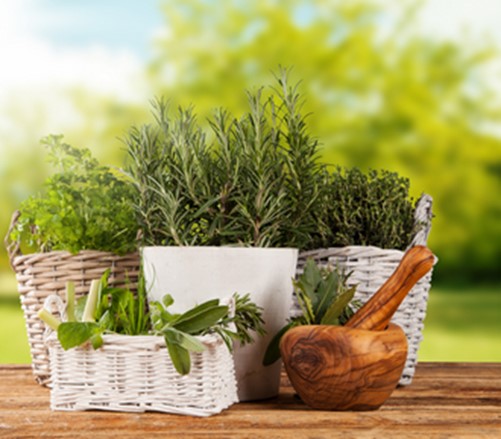Growing Herbs Indoors
Return to Vegetable Agent Articles

For plant-happy apartment dwellers and culinary enthusiasts alike, the appeal of being able to grow herbs indoors is often a strong one. Garden space limited in an urban setting, or even non-existent, the desire for windowsill access to these fresh, tasty, nutritious recipe-modifiers and aroma-generators may be even higher. So how is this able to be done? Are there tips and tricks out there to help ensure success?
Two important aspects to keep in mind when growing herbs is to note that they are not all one type of plant, and they are also not all the same part of a plant. As such, the conditions required to grow every respective type of herb are going to vary by type of plant and the plant part being encouraged. Light, nutrients, soil media, temperature range, moisture, and even humidity needs will vary from plant to plant, and no two plants should necessarily be treated exactly alike.
Nevertheless, as with most edible plants, herbs prefer full sunlight. A windowsill that not only receives abundant sunshine, but six hours of direct light, is preferable, remembering that the full plants need sun exposure. Frequent turning of the plants so that all leaves can have exposure to the sun will be necessary to prevent thinning and spindly plants.
Room temperatures of up to 70 degrees F during the day and down to 55 degrees F during the night will be hospitable to most types of herbs. Most herbs will also prefer a relatively-humid-yet-ventilated environment, meaning bundling together in their locations will be beneficial –but the air still needs to be moved around.
Knowing whether the herbs being worked with are annuals, perennials, or biennials will be one oft the more basic helpful steps in initial growing of the plants. If they’re annuals, the plants will have much higher rate of success being grown from seed. For perennials, cultivating a plant true to its parent is going to be much more successful through vegetative propagation methods. And for biennials, you may find the care process tedious enough, and the second-year growth spindly enough, to just treat them as annuals, replanting every year.
For larger, leafier, herbs like basil, cilantro, and parsley, it may be easier to harvest the whole plant at 3-6 inches of height, reseeding them afterward instead of allowing the plants to grow to full size.
As with all potted plants, adequate drainage (with drainage holes) will be necessary to maintain proper soil moisture. Since the herbs are in a limited growing space and are not being grown to be extra-large plants, fertilization should be done sparingly with a low range water-soluble fertilizer every two weeks. Fertilized more frequently, they will likely lose their appealing aroma or taste, so this is best avoided.
Also know, not all herbs are suited for containerized growing. Some will grow too large to be outside of the ground and some will have too fleshy of a root system to be potted. Regardless, many types still can be utilized.
Anthony Reardon, Horticulture Small Farms agent
Have questions?
The Garden Hotline is staffed by trained EMG volunteers and Extension staff who will assist you with questions.
Phone: (913) 715-7050
Email: garden.help@jocogov.org